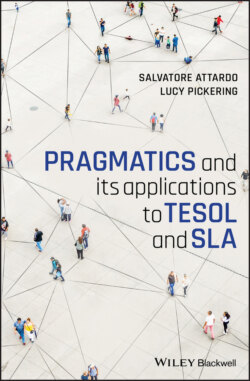Читать книгу Pragmatics and its Applications to TESOL and SLA - Salvatore Attardo - Страница 28
2.5 Is Acquisition of Pragmatics Different for L2 Child and Adult Learners?
ОглавлениеThe answer to this is yes, to the extent to which the language acquisition experience of adults and children is always different. On the one hand, Kasper and Rose (1999, p. 87) argue quite rightly that L2 speakers of any age when engaging in a similar action in any language “will rely on the same strategies to perform such an action.” For example, an L2 child understands the function of a request and will learn to use the L2 to perform that function as far as their grammatical proficiency allows. However, adults understand the societal value of politeness markers in a way that children do not (Wildner-Bassett, 1994). In other words, they are very aware of the importance of sociopragmatic work and so will piece together routine formulas or coin new ones in order to meet this perceived requirement, for example, I very appreciate/I never forget you kindness (Kasper, 2001, p. 509) in ways that children may not unless prompted by an adult.
Perhaps more significantly, children do not routinely perform language functions such as sarcasm, irony, or complex forms of teasing in the way in which adults do. Pexman et al. (2005) suggest that although children can recognize direct (as opposed to indirect) irony at 5 or 6 years old, they do not understand its humorous intent and will tend to identify with the target of the humor as opposed to the speaker’s humorous intent. The authors propose that this understanding continues to develop “late into middle childhood” (p. 259) and thus we would not expect these kinds of indirect language functions to develop in a parallel manner to adult learners. We will look at this again in Chapter 4.
